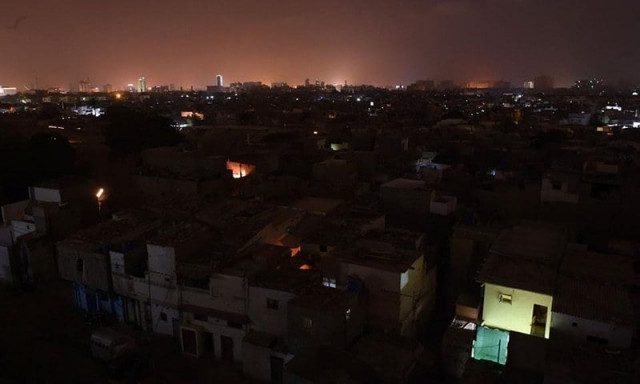No power relief in sight in coming days
Furnace oil stocks drying up; LNG shortage feared

There is no relief in electricity outages in sight in the coming days because of the fear of drying up furnace oil stocks and the shortage of LNG for power plants.
During a meeting on the power crisis held on June 6, the Petroleum Division had conveyed to the participants that the state-run Pakistan State Oil could supply an additional 3,000 tonnes per day of residual fuel oil (RFO) -- one of the lowest-value petroleum products from a refinery.
The operations of these RFO plants would reduce power outages by half an hour.
The Petroleum Division further informed the meeting that the PSO had only received offer of one cargo of RFO against bid of three cargoes for July this year.
Therefore, in case the PSO could not receive requisite offers of RFO cargoes, the existing stock would dry up. This would result in disruption of RFO supply to the power plants during July 2022, the Petroleum Division warned.
This will, in turn, result in increased power outages during the month of July this year.
For the supply of 100 mmcfd of re-gasified liquefied natural gas (RLNG), the Petroleum Division informed the meeting that it could not be met from the existing demand and supply situation.
However, if it had to be arranged for the power plants, it would have to be diverted as per these options: there would be no gas supply to the fertiliser industry and the closure of export industry.
This will result in a shortage of fertiliser in the country.
The Power Division informed that a meeting was held under the chairmanship of Prime Minister Shehbaz Sharif on June 4, where load management of electricity supply to domestic consumers was reviewed.
Read Power load-shedding to be reduced to 3.5 hours from tomorrow: Abbasi
During that meeting, the Power Division had presented multiple scenarios for load management in the backdrop of liquidity constraints due to unprecedented rise in fuel price as well as the temporary outages of power plants vis-à-vis rising demand during summer months.
That meeting was briefed that during the first week of June, a generation capacity of 19,000 MW was available in the system against a peak demand of 25,000 MW (excluding 3000 MW high loss feeders). Therefore, a shortfall of around 6,000 MW, leading to the power outages of six hours on average was observed.
During the second week of June and onwards, the available capacity was 21,000 MW on account of the addition of the plants which were currently on temporary outage, thereby reducing the anticipated load management by two hours i.e. four hours per day on average.
About 1,800 MW coal power plants would come online by last week of June bringing the available capacity to about 23,500 MW. This would reduce the load shedding hours to two and a half hours on average.
It was pointed out during that meeting that 1,150 MW of RFO and 560 MW of RLNG based power, which were otherwise available for generation, had not been included in this calculation. This was because additional gas was unavailable and RFO Plants were inefficient (Rs59/unit for fuel only).
For full operations of these power plants, RFO of 5,750 tonnes per day and RLNG supply of 100 mmcfd was required.
Moreover, it required an additional cash flow of Rs29 billion.
Keeping the situation in view, the federal cabinet was requested to consider and decide whether or not additional RFO-based generation of 550 MW was undertaken at the risk of losing an equal amount of power in July this year.
In this case, power outages would be reduced by one hour during June, Otherwise, the current schedule of four-hour power outages in major urban centres and longer duration of six or seven hours in rural areas would continue depending on the heat intensity.
During the discussion, the Power Division secretary had highlighted that due to the unusual heat wave, the demand- generation gap had accentuated despite the fact that in comparison with last year, more electricity was being produced.
He had further added that the power outages projections were based on normal heat wave trajectory.
However, if the temperatures rose further, power outages would increase. PM Shehbaz had highlighted that power outage could have been considerably mitigated had the projects including RLNG-Trimmu, Thar coal-based Shanghai Electric and Karot hydropower not suffered delay due to the “indifference” of the previous government.
Together these projects would have added 3,200 MW to the national grid.
The cabinet members had stressed the necessity of tapping the renewable energy potential, especially, solar and wind energy, to reduce dependence on imported fuels.
The power minister had assured that the Power Division was already working on these lines.



















COMMENTS
Comments are moderated and generally will be posted if they are on-topic and not abusive.
For more information, please see our Comments FAQ